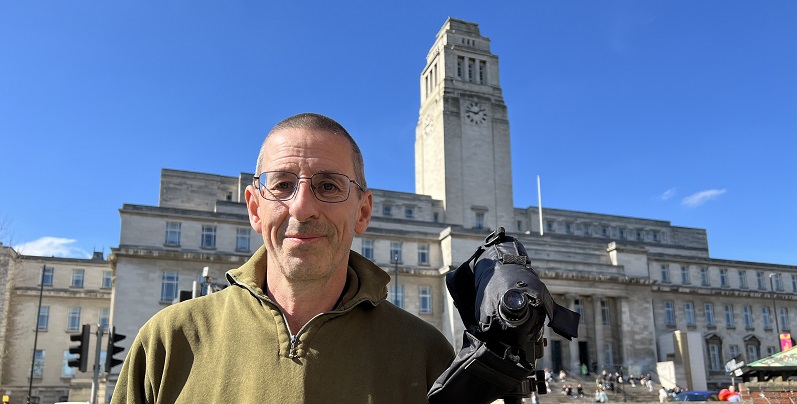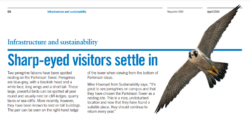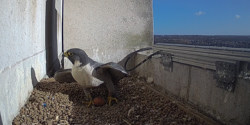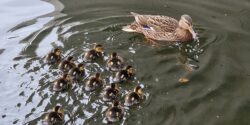The birder behind @UoLperegrine

You may be familiar with the Twitter account @UoLperegrine, but who is the magic behind it? Leslie Arkless is an Analytical Technician in Microstructure Materials Characterisation in the School of Civil Engineering. However, he is also an avid birder in his spare time! Read on for his blog on how he got into birding and how you can get involved too.
As a birder with a general interest in wildlife, it has been good to see the biodiversity on campus increase since I first started at the University over fourteen years ago. I first sparked an interest in Peregrines specifically when I read an article in the April 2015 copy of the Staff Reporter. The article mentioned that Peregrines had been seen on the Parkinson Tower. However, it took me another six months to first see one on the building.

Once I first saw Peregrines, I looked for them every day before setting up a Twitter account to record sightings and behavior. This has led me to working with the Sustainability Service in monitoring the Peregrines and being part of the team that rings the young.
Now, my lunchtimes are spent out on campus looking for the Peregrines. Their frequent perches are around the main University entrance on Parkinson Tower, or the Emmanuel Baptist Church or Trinity St David’s church spires. I also keep an eye out at Roger Stevens Pond. This is where passing migrant birds may stop over for a rest and drink around the pond.
Peregrines nesting on campus

Peregrines were once confined to remote upland crags, but recently have become a fairly common nesting urban bird. They use man-made tall structures (towers, chimneys, churches) with a suitable ledge for nesting.
Peregrines lay their first egg around the end of March/early April. This is after calling and mating for a few weeks beforehand from a prominent perch. Typically, three or four eggs are laid over a period of five to eight days. Then, incubation usually starts once the penultimate egg has been laid. This usually lasts for thirty-two days before the eggs hatch, which usually happens over a period of two days. Keep a watch on the Peregrine live camera for any developments.
Other birds on campus

It is not just Peregrines that you can spot around campus. Try to listen out around campus to hear birds singing, as this is how they proclaim their territories for the year. I have recently had sightings of redwings on St Georges Field (although I have seen a total of over fifty on Woodhouse Moor), over thirteen mallards on Roger Stevens Pond and a grey wagtail on the School of Chemistry courtyard, Roger Stevens Pond, and the School of Engineering roof. This is not to mention the grey heron on Roger Stevens Pond, which has recently been joined by a mallard with twelve ducklings.
Moreover, mallard can nest in many different places including wood piles, enclosed courtyards and green roofs that can be some distance from water. It is important to be careful around these areas, as if a sitting female mallard is disturbed, they can leave their nest and eggs exposed.
Dawn Chorus Day is approaching on Sunday 7th May. This is a great opportunity to rise early and take a moment to listen out to the birds in your area.
If this blog has sparked an interest for you, find out more about biodiversity on campus or get involved in our biodiversity events. Alternatively, keep an eye out on the RSPB and Wildlife Trust websites for events occurring in your local area.
Keep up to date on the latest news
-
-
- Follow us on Twitter: @UoL_Sus
- Follow us on Instagram: @uol_sus
- Follow us on Facebook: @UoLSustainability
- Sign up to our Sustainability newsletter
-
United Nations Sustainable Development Goals
 We use the United Nations Sustainable Development Goals (SDGs) as a framework to guide our activity. Our work on Student Citizenship links to all of the SDGs.
We use the United Nations Sustainable Development Goals (SDGs) as a framework to guide our activity. Our work on Student Citizenship links to all of the SDGs.
Find out more about our impact on the SDGs.
